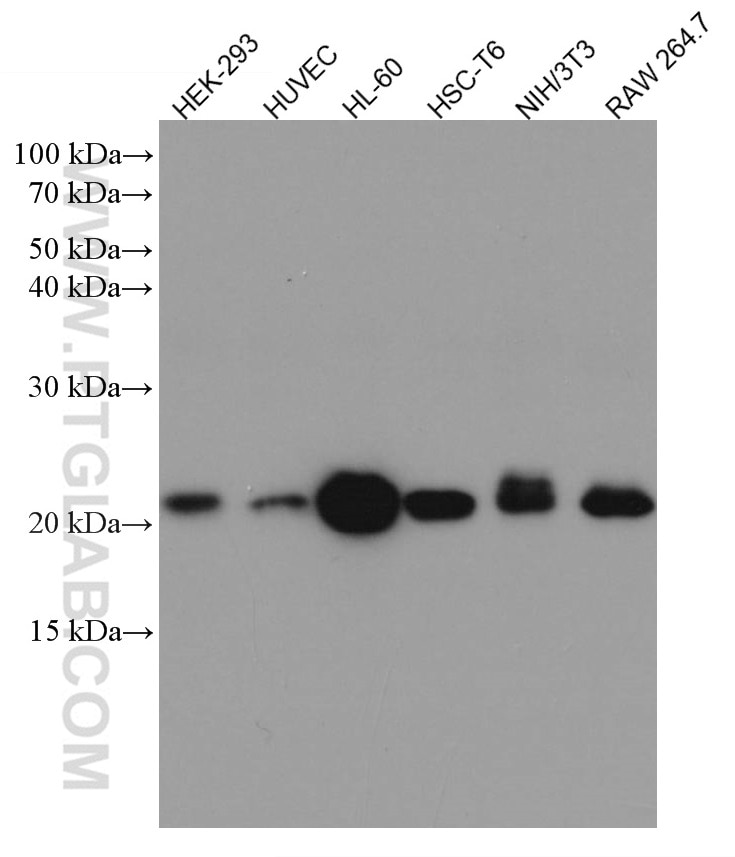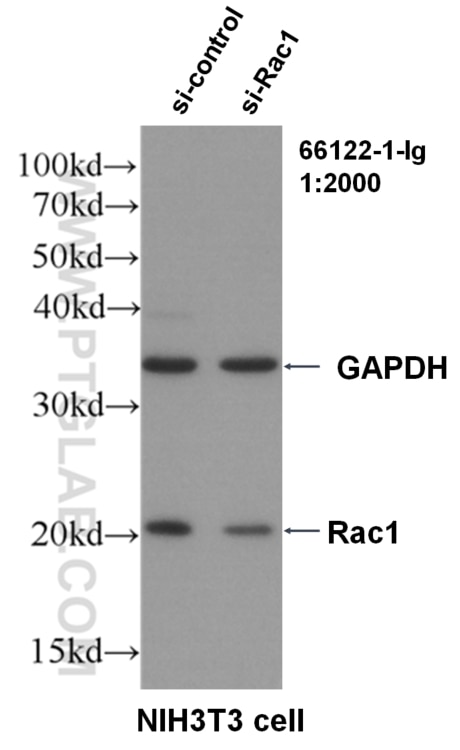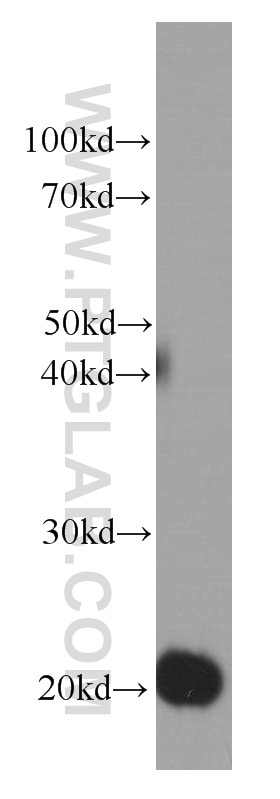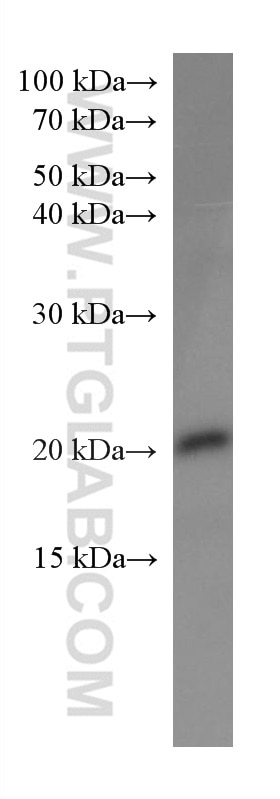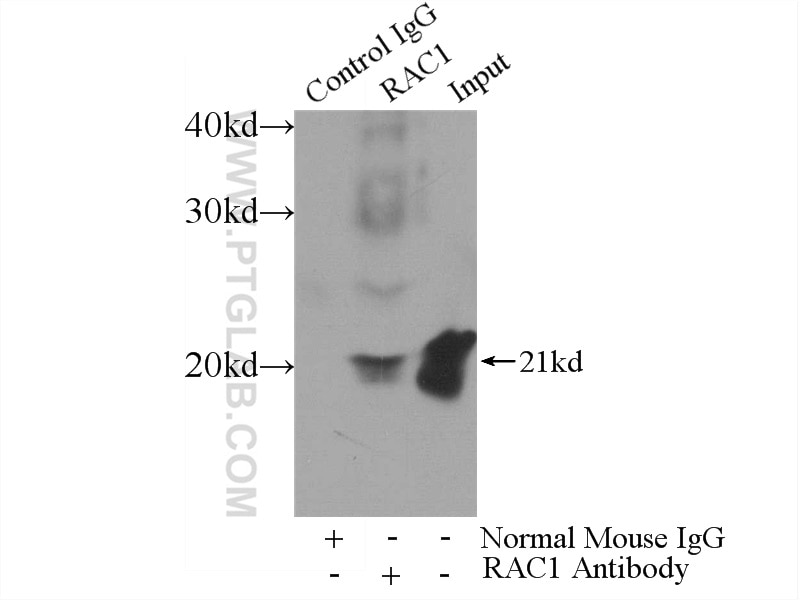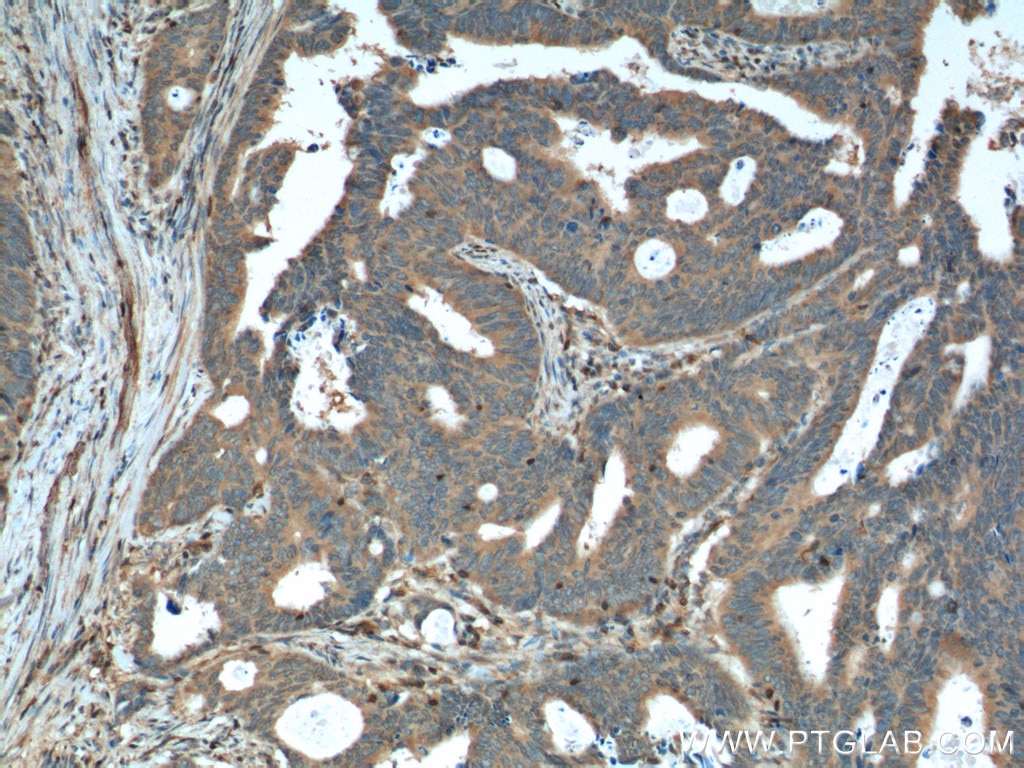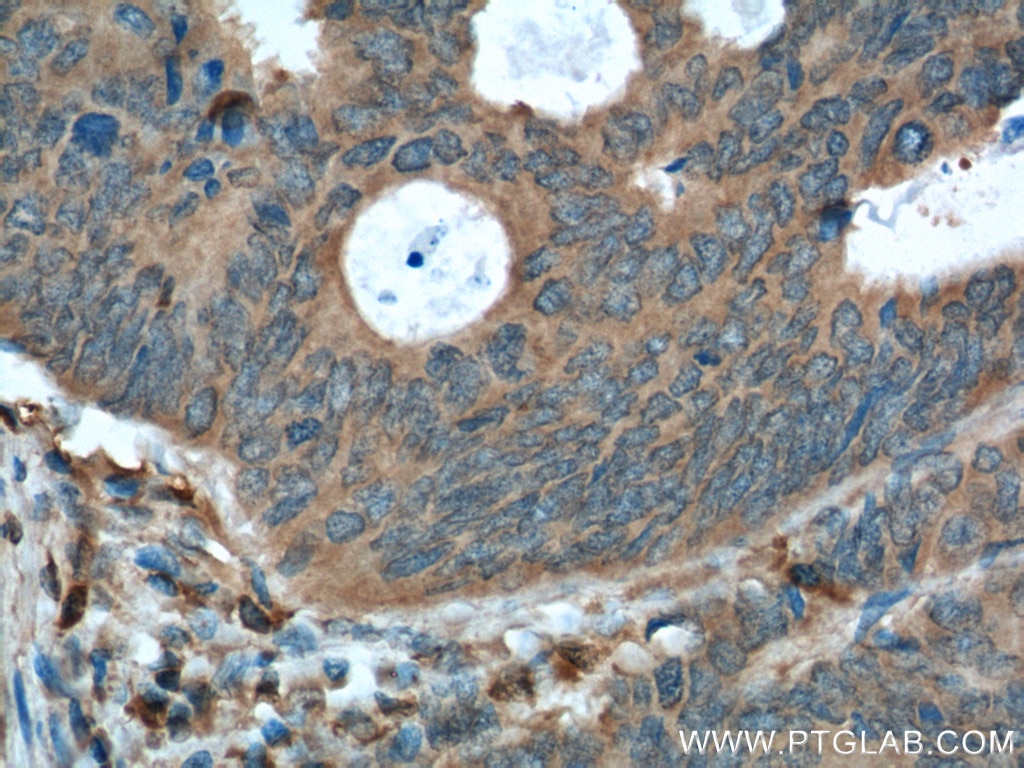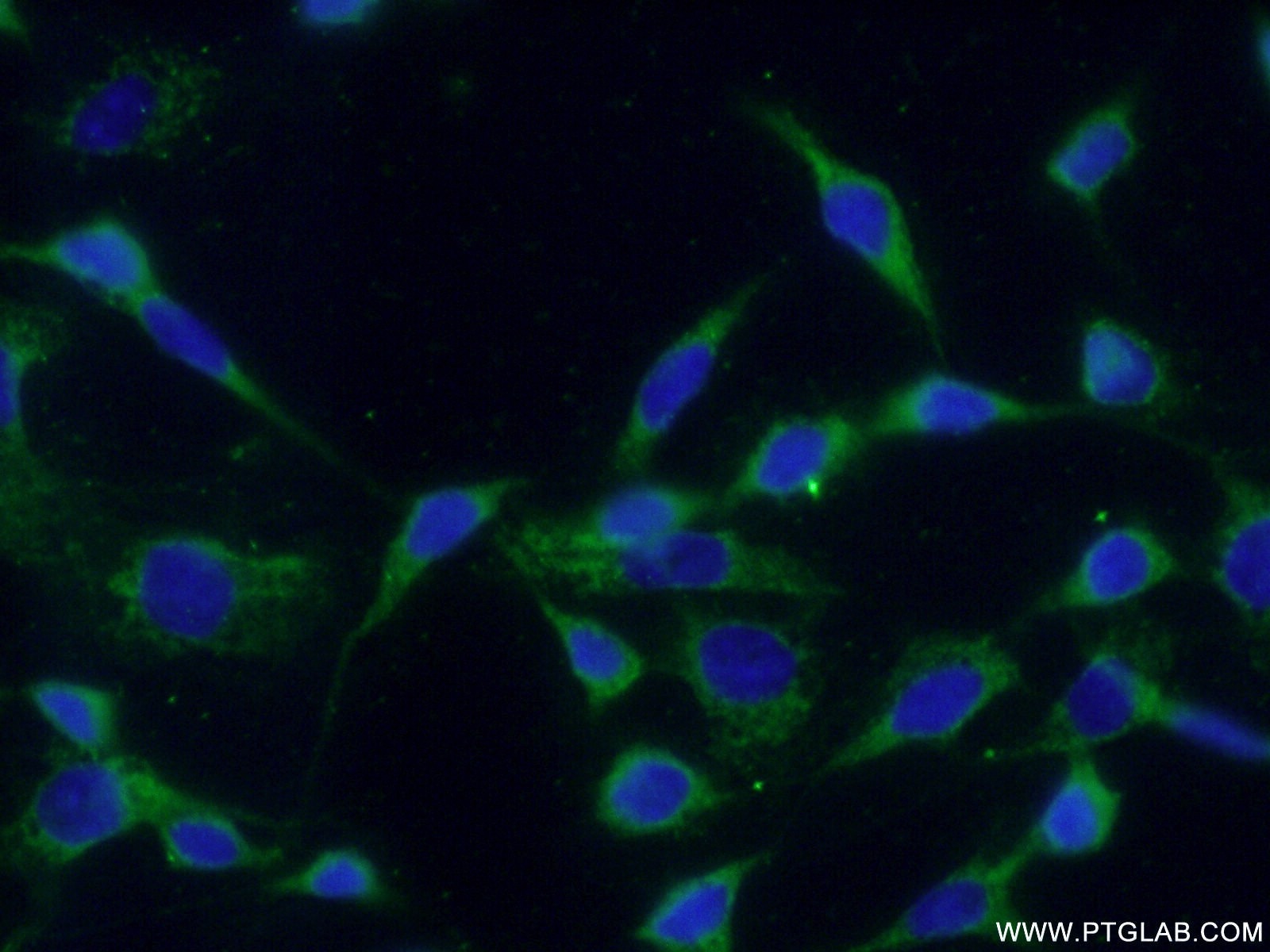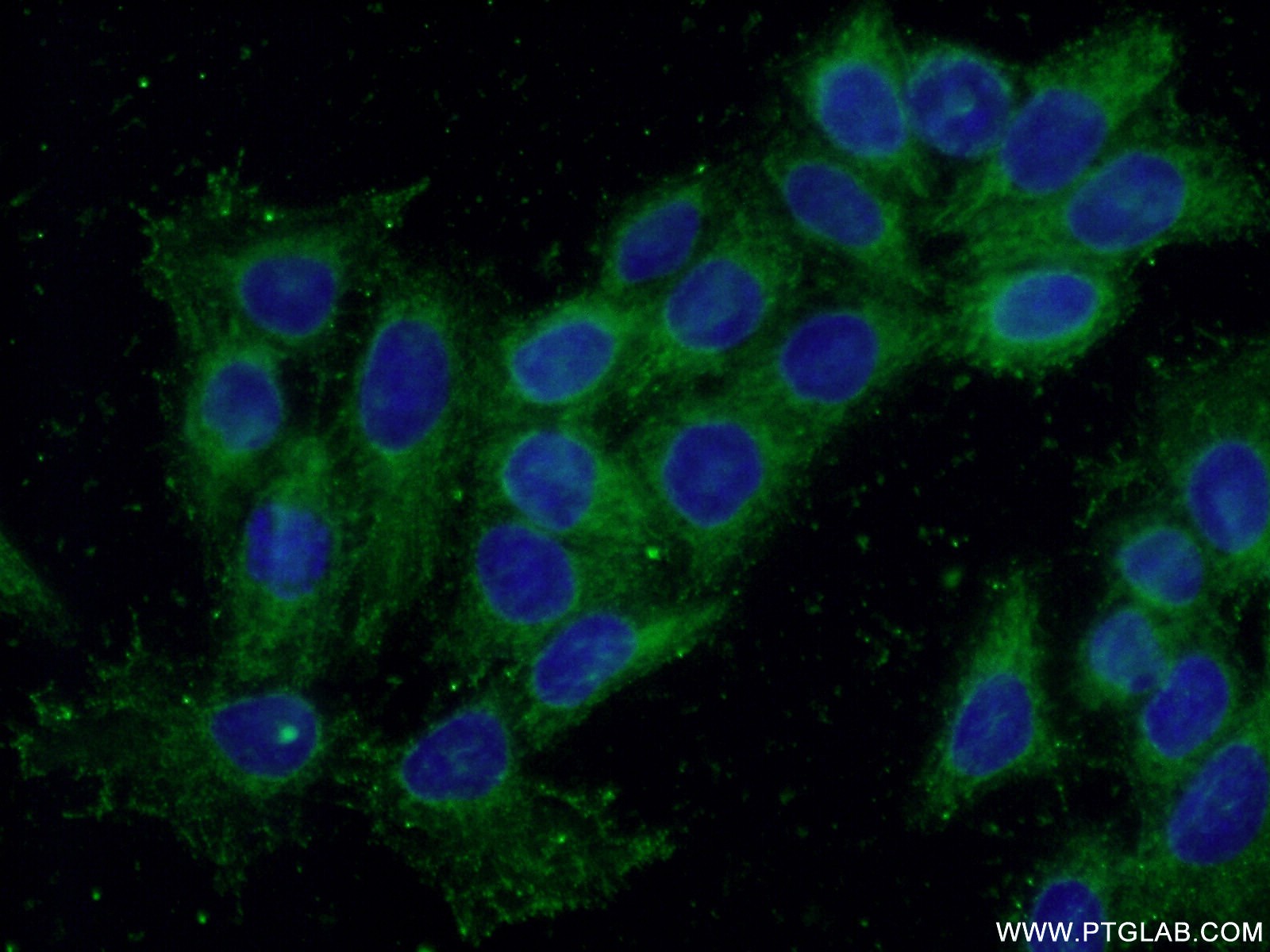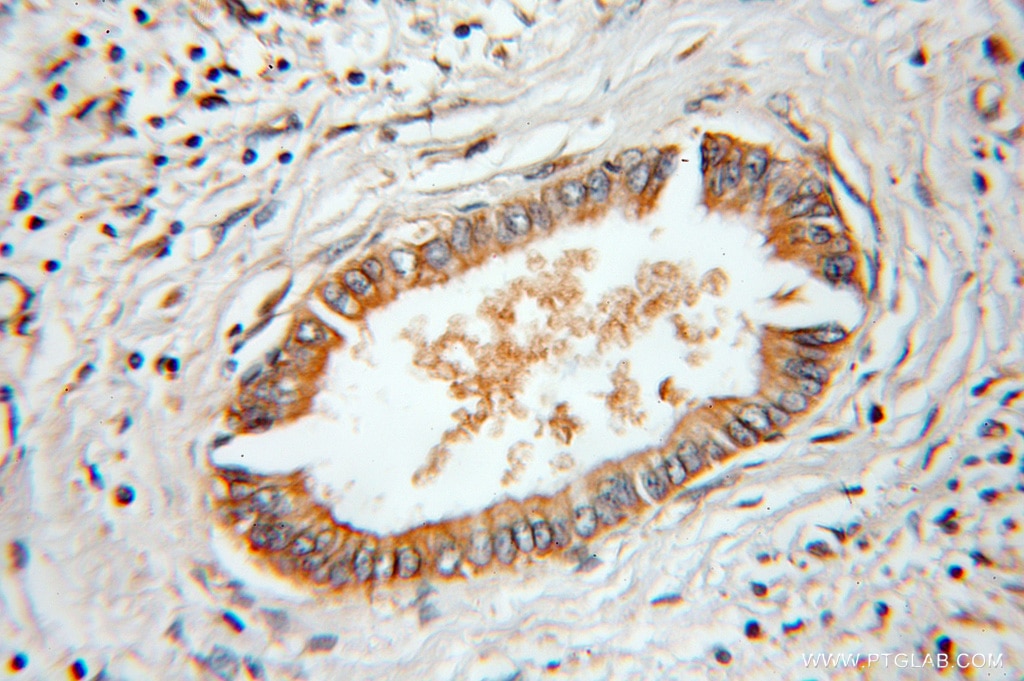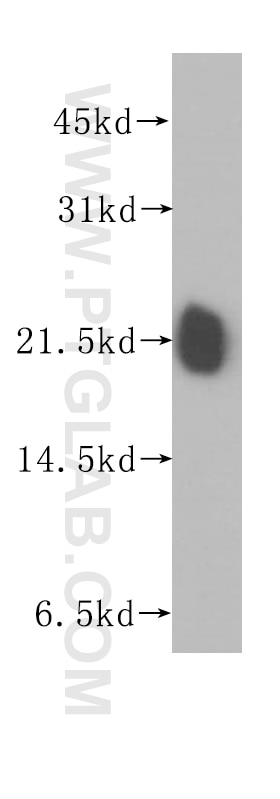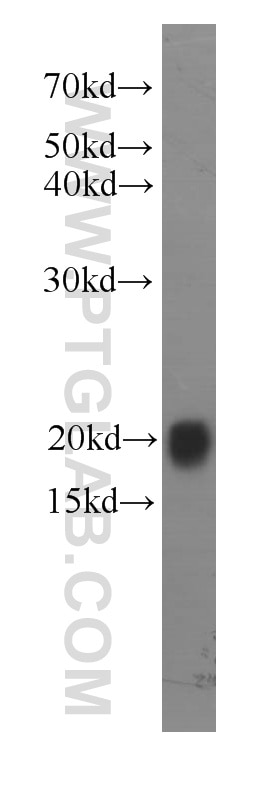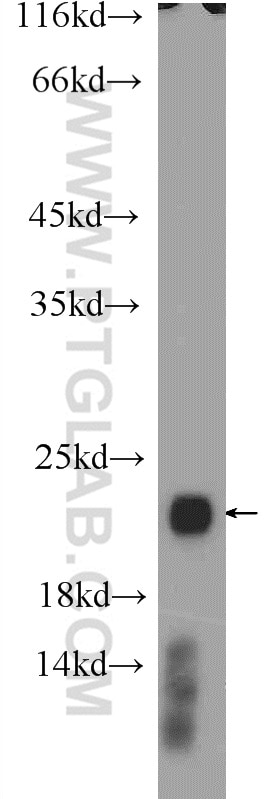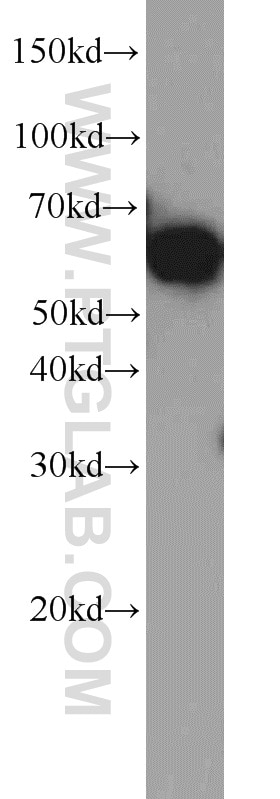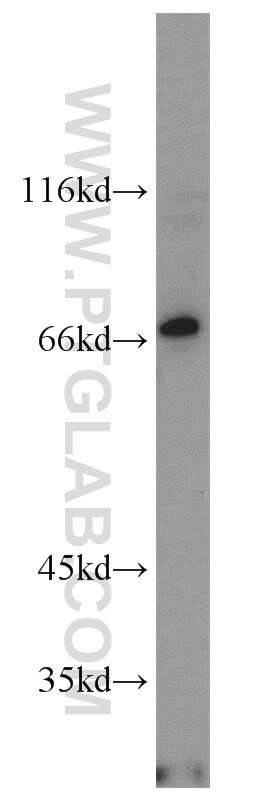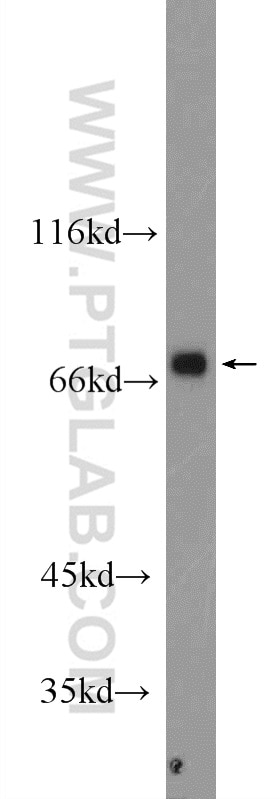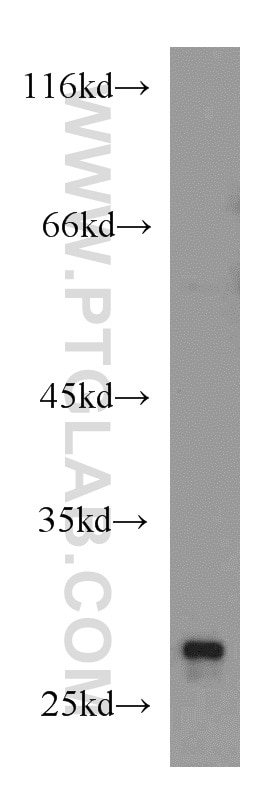- Phare
- Validé par KD/KO
Anticorps Monoclonal anti-RAC1
RAC1 Monoclonal Antibody for IF, IHC, IP, WB, ELISA
Hôte / Isotype
Mouse / IgG2b
Réactivité testée
Humain, rat, souris et plus (1)
Applications
WB, PLA, IP, IHC, IF, CoIP, ELISA
Conjugaison
Non conjugué
CloneNo.
4A4B11
N° de cat : 66122-1-Ig
Synonymes
Galerie de données de validation
Applications testées
| Résultats positifs en WB | cellules HEK-293, cellules HeLa, cellules HL-60, cellules HSC-T6, cellules HUVEC, cellules NIH/3T3, cellules RAW 264.7, tissu cérébral humain |
| Résultats positifs en IP | cellules HL-60, cellules HL-60, cellules HSC-T6, cellules HUVEC, cellules NIH/3T3, cellules RAW 264.7 |
| Résultats positifs en IHC | tissu de cancer du côlon humain il est suggéré de démasquer l'antigène avec un tampon de TE buffer pH 9.0; (*) À défaut, 'le démasquage de l'antigène peut être 'effectué avec un tampon citrate pH 6,0. |
| Résultats positifs en IF | cellules NIH/3T3, cellules HeLa |
Dilution recommandée
| Application | Dilution |
|---|---|
| Western Blot (WB) | WB : 1:1000-1:5000 |
| Immunoprécipitation (IP) | IP : 0.5-4.0 ug for 1.0-3.0 mg of total protein lysate |
| Immunohistochimie (IHC) | IHC : 1:50-1:500 |
| Immunofluorescence (IF) | IF : 1:50-1:500 |
| It is recommended that this reagent should be titrated in each testing system to obtain optimal results. | |
| Sample-dependent, check data in validation data gallery | |
Applications publiées
| KD/KO | See 2 publications below |
| WB | See 25 publications below |
| IHC | See 2 publications below |
| IF | See 7 publications below |
| IP | See 2 publications below |
| CoIP | See 1 publications below |
Informations sur le produit
66122-1-Ig cible RAC1 dans les applications de WB, PLA, IP, IHC, IF, CoIP, ELISA et montre une réactivité avec des échantillons Humain, rat, souris
| Réactivité | Humain, rat, souris |
| Réactivité citée | rat, Humain, porc, souris |
| Hôte / Isotype | Mouse / IgG2b |
| Clonalité | Monoclonal |
| Type | Anticorps |
| Immunogène | RAC1 Protéine recombinante Ag17779 |
| Nom complet | ras-related C3 botulinum toxin substrate 1 (rho family, small GTP binding protein Rac1) |
| Masse moléculaire calculée | 21 kDa |
| Poids moléculaire observé | 21 kDa |
| Numéro d’acquisition GenBank | BC004247 |
| Symbole du gène | RAC1 |
| Identification du gène (NCBI) | 5879 |
| Conjugaison | Non conjugué |
| Forme | Liquide |
| Méthode de purification | Purification par protéine A |
| Tampon de stockage | PBS avec azoture de sodium à 0,02 % et glycérol à 50 % pH 7,3 |
| Conditions de stockage | Stocker à -20°C. Stable pendant un an après l'expédition. L'aliquotage n'est pas nécessaire pour le stockage à -20oC Les 20ul contiennent 0,1% de BSA. |
Informations générales
RAC1b, also named as TC25, belongs to the small GTPase superfamily and Rho family. RAC1 is a plasma membrane-associated small GTPase which cycles between active GTP-bound and inactive GDP-bound states. In its active state, it binds to a variety of effector proteins to regulate cellular responses such as secretory processes, phagocytosis of apoptotic cells, epithelial cell polarization and growth-factor induced formation of membrane ruffles.
Protocole
| Product Specific Protocols | |
|---|---|
| WB protocol for RAC1 antibody 66122-1-Ig | Download protocol |
| IHC protocol for RAC1 antibody 66122-1-Ig | Download protocol |
| IF protocol for RAC1 antibody 66122-1-Ig | Download protocol |
| IP protocol for RAC1 antibody 66122-1-Ig | Download protocol |
| Standard Protocols | |
|---|---|
| Click here to view our Standard Protocols |
Publications
| Species | Application | Title |
|---|---|---|
Mol Cell TCR activation directly stimulates PYGB-dependent glycogenolysis to fuel the early recall response in CD8+ memory T cells. | ||
Nat Commun TLR4 signalling via Piezo1 engages and enhances the macrophage mediated host response during bacterial infection. | ||
Circ. Res. Inhibition of KLF5-Myo9b-RhoA Pathway-Mediated Podosome Formation in Macrophages Ameliorates Abdominal Aortic Aneurysm. | ||
Oncogene Smoking-associated upregulation of CBX3 suppresses ARHGAP24 expression to activate Rac1 signaling and promote tumor progression in lung adenocarcinoma. | ||
Cell Chem Biol Phosphorylation of guanosine monophosphate reductase triggers a GTP-dependent switch from pro- to anti-oncogenic function of EPHA4. |
